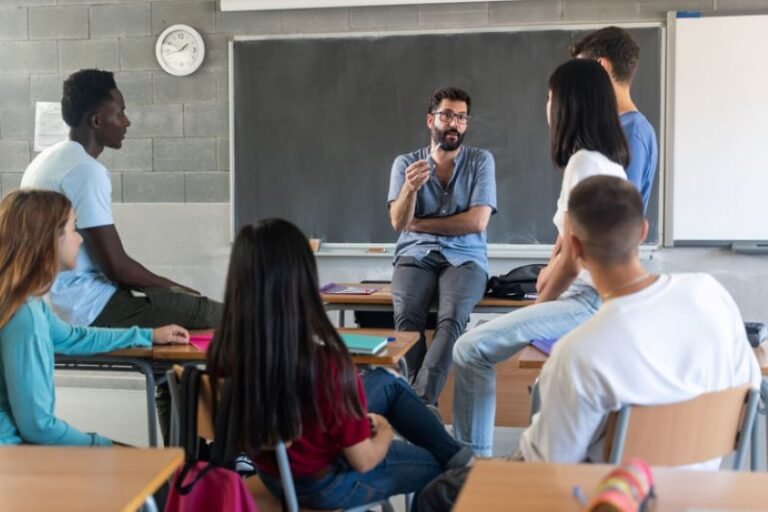Sexual health education is a critical component of a comprehensive education that equips young people with the knowledge and skills to make informed decisions about their sexual and reproductive health. For LGBTQIA+ (Lesbian, Gay, Bisexual, Transgender, Queer, Intersex, Asexual, and Other Identities) youth, there are specific issues that educators and policymakers need to consider to ensure coherence and relevance in sexuality education programs. health.
Unique challenges faced by LGBTQIA+ youth
- Lack of participation in the traditional curriculum: Traditional sexual health education often fails to adequately address the needs and experiences of LGBTQIA+ youth. Many curricula focus primarily on heterosexual relationships and social gender identities, excluding the diverse range of sexual orientations and gender identities.
- Higher rates of risky behaviors: LGBTQIA+ youth may engage in riskier sexual behaviors due to a lack of comprehensive sexual health education tailored to their needs. This can lead to higher rates of sexually transmitted infections (STDs) and unintended pregnancies among this demographic.
- Effects on mental health: Stigma, discrimination and lack of acceptance can contribute to mental health challenges for LGBTQIA+ youth. A holistic approach to sexual health education must address not only the physical health but also the mental and emotional well-being of these individuals.
Despite the unique challenges LGBTQIA+ youth face when it comes to sexual health education, there are ways to make it more inclusive and beneficial for all individuals, regardless of their sexual orientation or gender identity. Here are some best practices for LGBT+ inclusive sexual health education.
Best Practices for LGBT+ Inclusive Sexual Health Education
- Summary Language: Use inclusive language that recognizes and respects different sexual orientations and gender identities. This creates an environment of affirmation and support for LGBTQIA+ youth. Some examples of inclusive language are using terms like “diverse/different sexual orientations” rather than implicitly assuming heterosexuality, referring to “gender identity” and “gender expression” to recognize and respect different gender identities, and saying “partner” or “ significant”. other’ instead of assuming one’s partner’s gender identity with terms like ‘boyfriend’ or ‘girlfriend’.
- Different Representation: Incorporate diverse representations of relationships, including LGBTQIA+ examples, into educational materials. This helps normalize different identities and relationship experiences.
- Inclusive Comprehensive Sexuality Education (CSE): Support and implement comprehensive sexuality education that covers a wide range of topics, including consent, communication and healthy relationships, while also being inclusive of LGBTQIA+ experiences.
Addressing the unique needs of LGBTQIA+ youth in sexual health education is essential to promoting their overall well-being. By adopting inclusive practices, using affirming language, and recognizing the diversity of sexual orientations and gender identities, educators can help create a safer and more supportive environment for all students.
For more information on this topic, read these publications from ISSM Journals: The Journal of Sexual Medicine, Sexual Medicine Reviews, and Open Access Sexual Medicine:
Sexuality education for trans and nonbinary youth: Past experiences and suggested content
TranZap: A transgender resource for finding gender-affirming providers
Bibliographical references:
Centers for Disease Control and Prevention. (2019). HIV and Youth.
Institute of Medicine. (2011). Lesbian, Gay, Bisexual, and Transgender Health: Building a Foundation for Better Understanding. Press of National Academies.
Kosciw, JG, Greytak, EA, Palmer, NA, & Boesen, MJ (2014). The 2013 National School Climate Survey: The experiences of lesbian, gay, bisexual, and transgender youth in our nation’s schools. GLSEN.
McGuire, JK, Anderson, CR, Toomey, RB, & Russell, ST (2010). School climate for transgender youth: A mixed-methods investigation of student experiences and school responses. Journal of Youth and Adolescence, 39(10), 1175-1188.
Mustanski, B., & Fisher, CB (2016). HIV Rates Rise in Gay/Bisexual Adolescents: IRB Barriers to Research Must Be Addressed to Bend the Curve. American Journal of Preventive Medicine, 51(2), 249-252.
Unesco. (2018). International technical guidance on sexuality education: An evidence-based approach.
